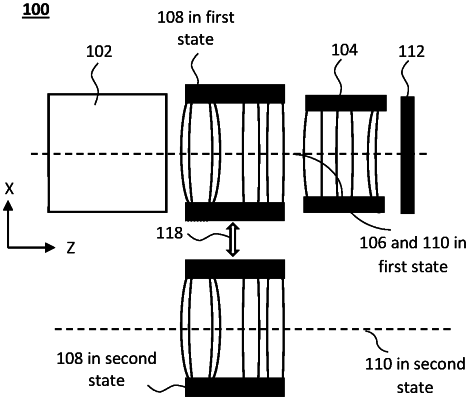| CPC G02B 13/0065 (2013.01) [G02B 7/04 (2013.01); G02B 13/003 (2013.01); G02B 15/06 (2013.01); G02B 27/30 (2013.01)] | 16 Claims |

|
1. A zoom camera comprising:
a) a single optical path folding element (OPFE) for folding the light from a first optical path to a second optical path;
b) a first lens having a first optical axis, a first effective focal length EFLL1 and including NL1 lens elements, the first optical axis being along the second optical path;
c) a collimating lens having a second effective focal length EFLL2, a second optical axis and including NL2 lens elements; and
d) an image sensor located on the second optical path,
wherein the collimating lens is movable to provide at least a first lens state and a second lens state, wherein in the first lens state the collimating lens is positioned in the second optical path between an image side of the single OPFE and the first lens such that light entering the first lens arrives only from the image side of the collimating lens, a combined effective camera focal length of the first lens state being EFLC1 different than EFLL1, and wherein in the second state the collimating lens is positioned outside the second optical path such that light entering the first lens arrives directly from the image side of the single OPFE and does not arrive from the image side of the collimating lens, a combined effective camera focal length of the second lens state being EFLC2 equal to EFLL1, and wherein a ratio EFLC1/EFLC2 is in the range of 0.2 to 5.
|